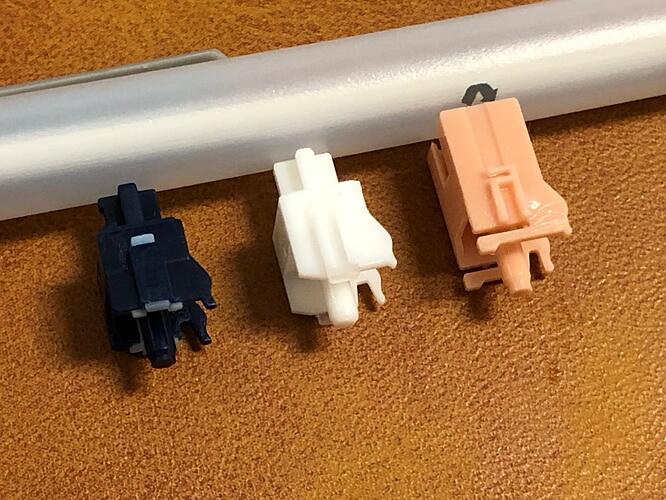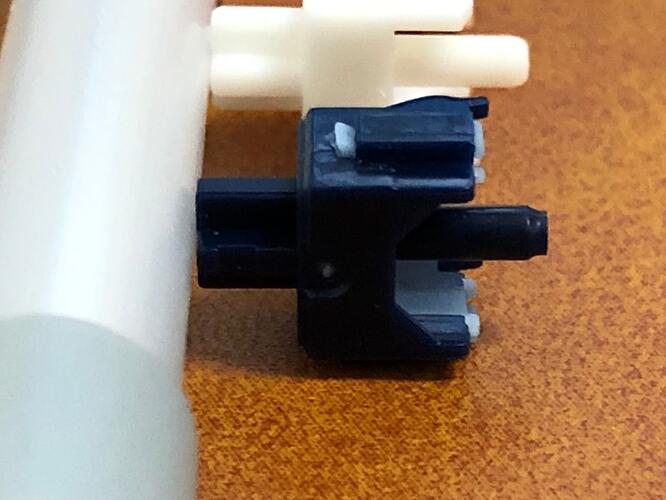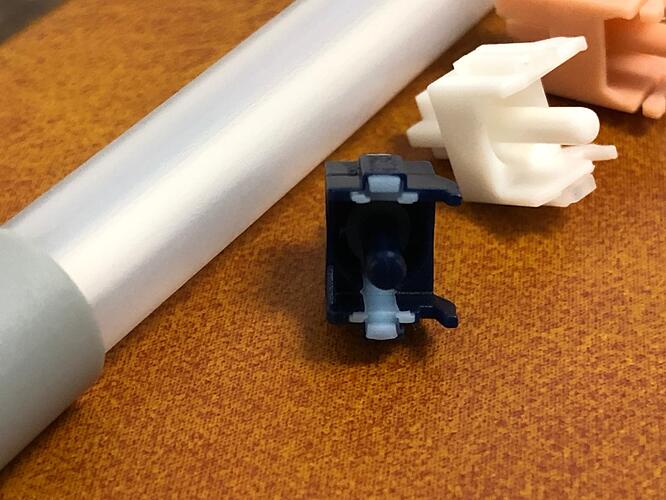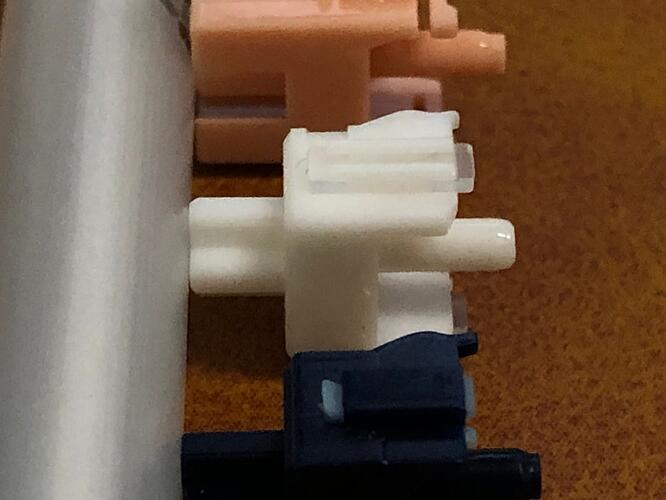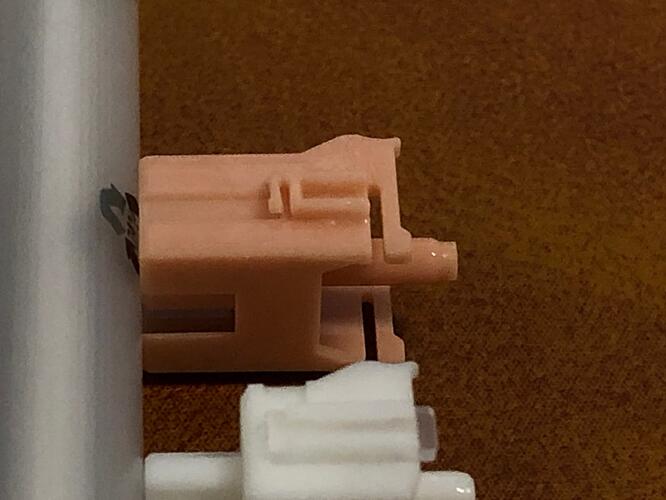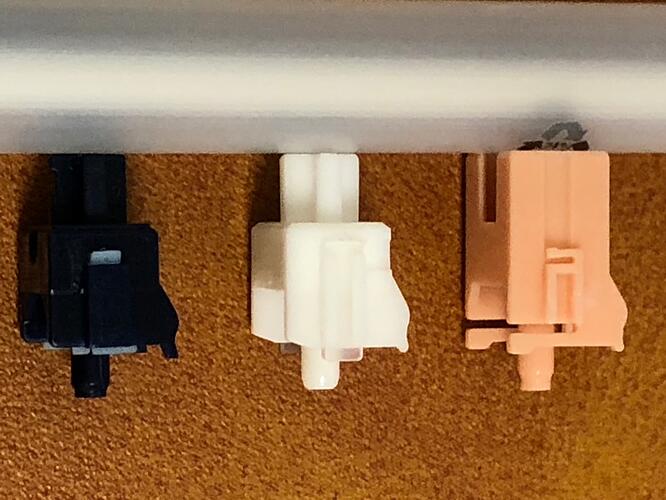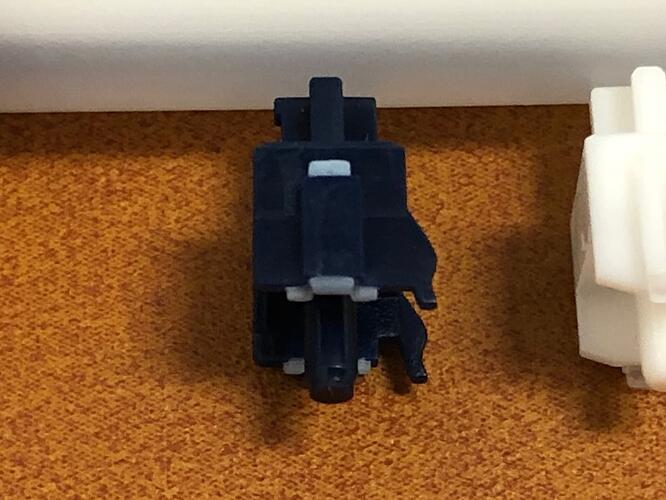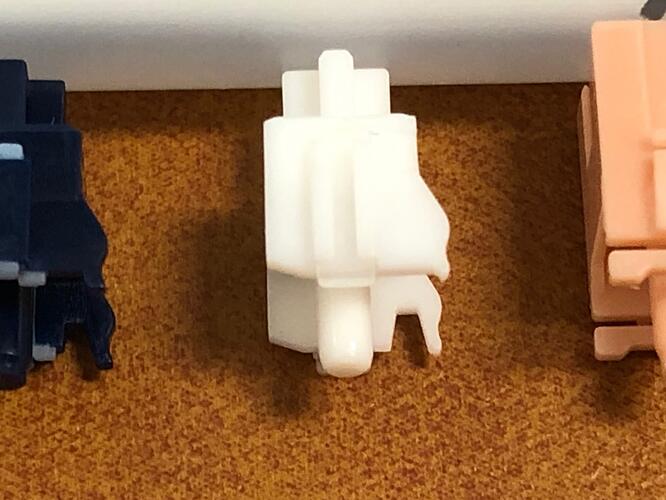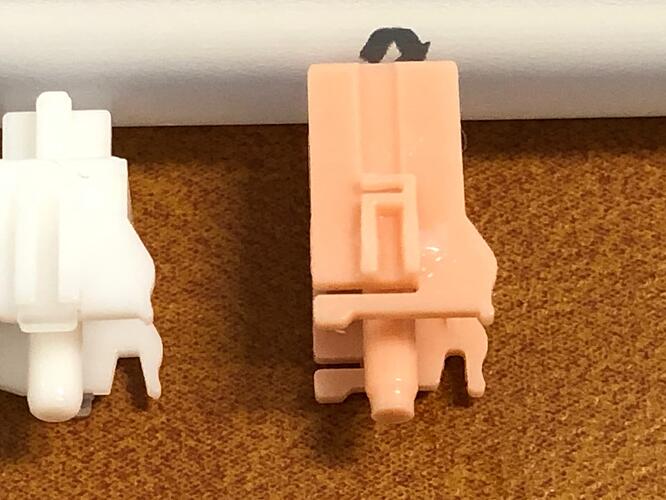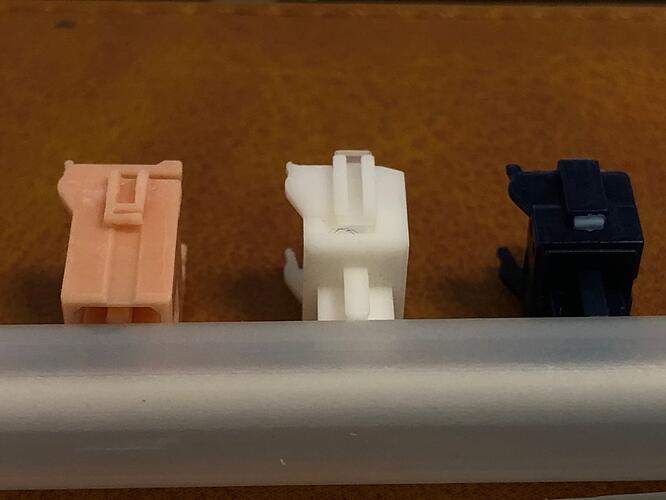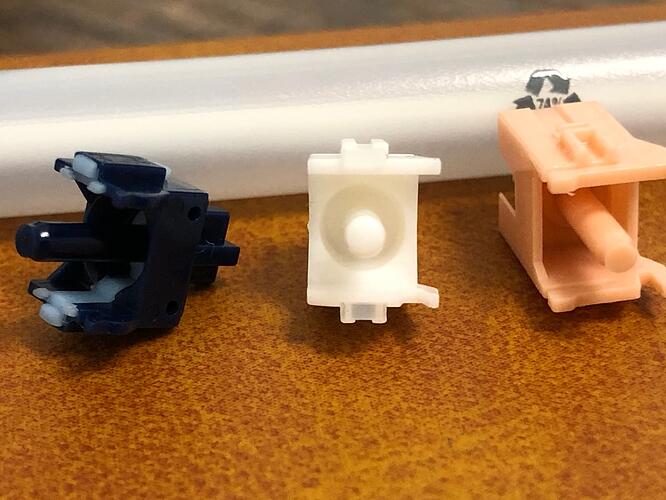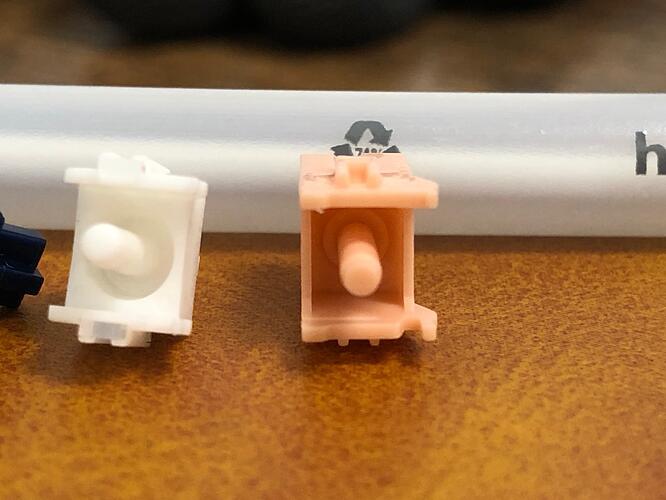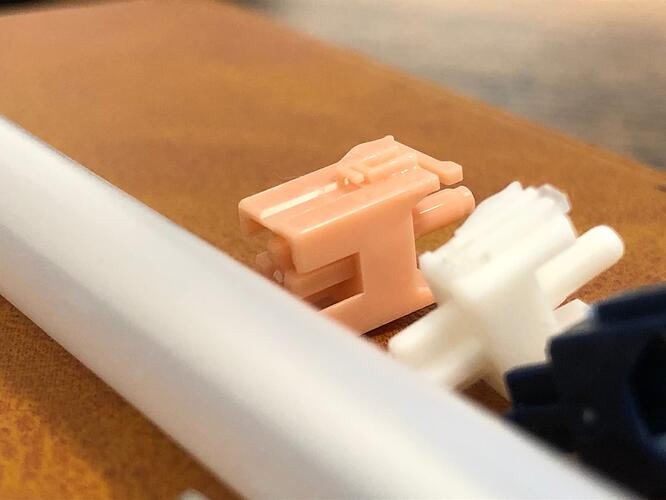Alright! Time for a much overdue (but still pretty informal) update to this post, which I made before most of my current favorite silents even existed.
Thanks to @ListlessLlama for the good question that prompted this update:
Today I’ll be comparing the aforementioned Iceberg Rose stems with a V2 Zilent and a Boba U4; just photos for today but I’ll have recordings of the Roses in the not too distant future, and a more extensive silent switch comparison is in the works. On to the photos:
From left to right, Zilent V2, Boba U4, Iceberg Rose.
First let’s take a close look at the Zilent:
Zeal Zilent stems are customized versions of Gateron’s silent stem design, itself a barely-distinct knock-off of Cherry’s version. Of our three examples today, this one is the most complex both in terms of shape and in terms of manufacturing; a second material is double-shot injection molded into the stem to form shaped, pliant feet on the top and bottom.
There appears to be a fair bit of engineering going on with these, but the manufacturing isn’t terribly precise, so these sometimes have bits of stem or pad material sticking off to the side. The pads have a fairly complex shape with three different sizes of “feet” and eight total contact points.
They generally do their job successfully; Gateron’s silents are indeed much more quiet than their non-dampened siblings. However, there are some issues with the design that remain unaddressed.
Just like the Gateron Silent Black example above in the original post, Zilents have an unusually high resting position - and I remain convinced this is unintentional because of how the switch behaves. That distance between where normal and silent Gaterons sit exists as a sort of weird pre-travel on the silent ones. Linears and tactiles alike have this different-feeling pre-travel before the normal behavior of the switch engages.
One more caveat that applies to both Cherry’s and Gateron’s designs is that key-strokes at certain off angles or beyond a certain level of force will either avoid or overcome the pads, producing a sharp clack. In most normal use cases this is pretty rare, though; you can count on both to be reasonably quiet in an office setting.
While successful in dampening the sound, these designs do sacrifice both smoothness of travel and crispness of bottom-out; this is generally true of most dampened switches. In today’s landscape, I’d say these are somewhere near the middle in terms of “mush-factor”. Not bad, but for me it leaves a little to be desired.
Generally, Zilents are smooth with a clean, round bump - but the funky pre-travel adds some noise to the feeling and the slightly inconsistent dampening behavior prevents these from reaching my personal “A” tier. That said, people love these for a reason, and they’ve long been considered some of the most satisfying quiet switches one can buy for an MX-compatible keyboard.
Next let’s take a close look at the Boba, itself descended from the Gazzew Silent Linear I used in the Panda switch with a goofy name in the original post.
As far as I’m aware, all Outemu-made silents use the same style of dampener these do; a clear silicone strip held in place by some plastic rails. The silicone strip is shaped like a block-letter capital “I”, and can be removed from and re-installed into the stem. It’s possible to use the stems without the inserts, but I really don’t recommend it.
Compared with Cherry and Gateron’s method, Outemu’s is a lot more simple. No double-shot molding, no complicated shape, just a little strip of soft stuff with just enough shaping to stay in place.
Continuing the comparison with Cherry and Gateron’s silents, Outemu’s are significantly more quiet, and they avoid the occasional clack thanks to the removal of some material where the stem would normally impact in that scenario.
Thanks to having only two contact points on the bottom instead of six, the bottom-out impact is more clearly-defined than with the Gaterons or Cherries despite being softer; so the “mush factor” with these is more adjacent than better or worse; softer, but more clean and crisp.
Generally, Outemu’s dampeners are the softest I’m aware of when it comes to MX-compatible switches, and likewise the most quiet to this day.
Compared with average switches, these have a slightly lower resting position, with the “shelf” of the stem the cross mount sits on being flush with the top surface of the housing. (Usually it’s the bottom of the bevel around this surface that is flush with the housing. With the Gaterons, the bevel sits above the top housing.)
These aren’t as smooth as the Zilents (excluding the few that have poorly qc’d stems with bits sticking out), but they’re significantly more quiet - and more consistent in that quietness. Travel is shorter thanks both to a lower resting position, and a higher bottom-out thanks to taller pad-feet.
Alright! Time for the star of the show today; the Epomaker Iceberg silent tactile stem:
These fascinating little guys are an evolution of the stem I first saw in the KK Light Wave V2, a more common variant of which is known as the Candy Jade Green - I did a video on that one last year if you’d like to know more about it. The feature this one inherits from the KK are the pliant legs on the bottom.
Materially speaking, these are the most simple of the three stems; though they arguably have the most complex shape. Instead of molding or otherwise retaining a softer material to use as a dampening impact surface, these switches make clever use of flexible legs - much like those found on traditional Cherry-stile stabilizers. You know - the bits all the guides tell you to clip-off in step 1.
Unlike The Light Wave V2 or Jade Green, however, these also have a pliant leg dampeners at the top of the stem rails, making these fully silent. It’s easy to imagine those little legs are just a gimmick at first sight, but darn if they aren’t respectably effective.
That’s right - this is a silent switch with no dampening pads, and it works.
Thanks to the dampening being made of a firm material, these have the least amount of “mush factor” while still retaining a dampened sound and feel. They aren’t as quiet as Outemu silents, but then again, neither is anything else right now.
Compared with the Zilent, I think these have a more clean and consistent feeling to the bottom and top-out. They also don’t suffer from the high resting position issue.
Striking these hard, it’s possible to make them clack - but it’s consistent and proportional to the force used, unlike the Gaterons or Cherries, which seem more random and chaotic with the occasional clack that may or may not correlate with how hard you’re typing.
These might just be the most smooth and clean of the three, which is impressive considering the competition - and that these come from a name generally associated with budget gear here in the West.
There are quite a few permutations of this particular “Iceberg” line, which isn’t even the only one of those - but in this case, it’s a family of switches that all share those top and bottom pliant leg dampeners. Some are tactile, some are linear - this Rose version is the more firm of the tactile options.
Like the other two of today’s switches, these have a big, round, smooth bump. Pretty similar to the U4’s, but a bit more smooth and easy to crest.
Some more photos:
Alright - that’s all for now, but more details in the not too distant future including recordings and the like. Let me know if you have any questions or curiosities about any of these and I’ll do my best to find an answer for you.
Cheers!
